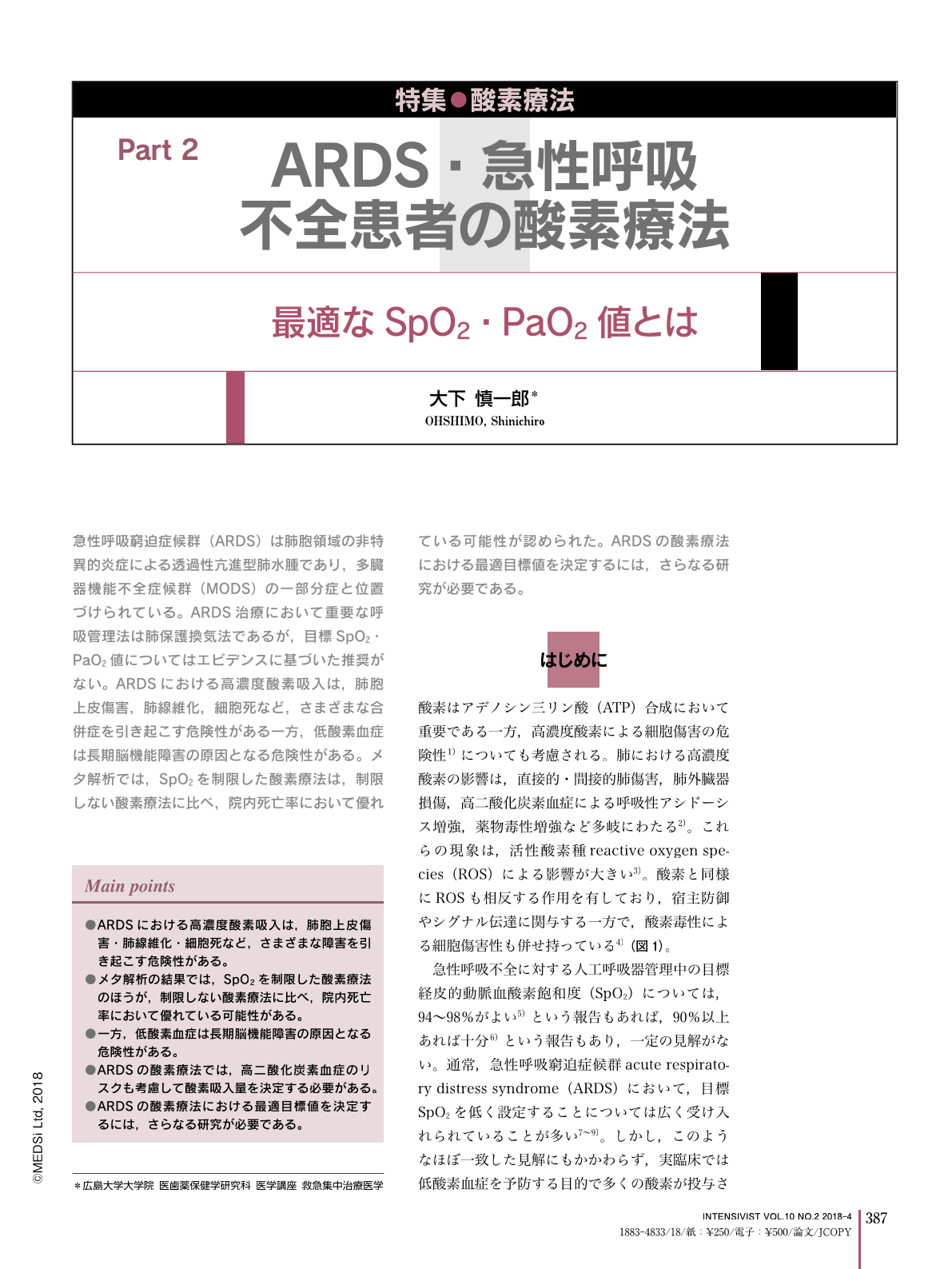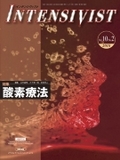Japanese
English
- 有料閲覧
- Abstract 文献概要
- 1ページ目 Look Inside
- 参考文献 Reference
急性呼吸窮迫症候群(ARDS)は肺胞領域の非特異的炎症による透過性亢進型肺水腫であり,多臓器機能不全症候群(MODS)の一部分症と位置づけられている。ARDS治療において重要な呼吸管理法は肺保護換気法であるが,目標SpO2・PaO2値についてはエビデンスに基づいた推奨がない。ARDSにおける高濃度酸素吸入は,肺胞上皮傷害,肺線維化,細胞死など,さまざまな合併症を引き起こす危険性がある一方,低酸素血症は長期脳機能障害の原因となる危険性がある。メタ解析では,SpO2を制限した酸素療法は,制限しない酸素療法に比べ,院内死亡率において優れている可能性が認められた。ARDSの酸素療法における最適目標値を決定するには,さらなる研究が必要である。
Main points
●ARDSにおける高濃度酸素吸入は,肺胞上皮傷害・肺線維化・細胞死など,さまざまな障害を引き起こす危険性がある。
●メタ解析の結果では,SpO2を制限した酸素療法のほうが,制限しない酸素療法に比べ,院内死亡率において優れている可能性がある。
●一方,低酸素血症は長期脳機能障害の原因となる危険性がある。
●ARDSの酸素療法では,高二酸化炭素血症のリスクも考慮して酸素吸入量を決定する必要がある。
●ARDSの酸素療法における最適目標値を決定するには,さらなる研究が必要である。
Acute respiratory distress syndrome (ARDS) is pulmonary edema with capillary hyperpermeability, and is characterized by non-specific inflammation of the alveoli. Although lung-protective ventilatory strategies are essential for treating patients with ARDS, optimal SpO2 and PaO2 levels have not yet been determined. Hyperoxia in patients with ARDS may result in complications such as diffuse alveolar damage, pulmonary fibrosis, and cell death, while hypoxia may cause long-term brain dysfunction. Meta-analysis shows that conservative oxygen therapy might have a beneficial effect on in-hospital mortality compared to liberal oxygen therapy. Further studies are needed to validate the optimal levels of SpO2 and PaO2 in the management of patients with ARDS.

Copyright © 2018, MEDICAL SCIENCES INTERNATIONAL, LTD. All rights reserved.


